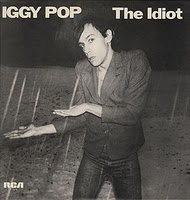 This is probably Iggy’s best record, thanks to Bowie’s inspired production touches and obvious assistance in the songwriting department. The weird post-glam sonic breakthroughs Bowie and cohorts were making in these days provide the perfect foil for Iggy’s nihilistic hedonism and manic-depressive urbanity, which ranges from the proto-goth, blasé-in-crowd banality of “Fun” to the “hey, where the f*ck did everybody go?” sentiments of “Dum Dum Boys,” to a final affirmation to just go out for cigarettes in “Mass Production.” The proto-industrial soundscapes give Iggy’s alienated musings the perfect setting, and the Eno-inspired spaciousness in the production gives him room to rant, rave, mumble, and croon his way through the urban wasteland without miring him down; in other words, even when it’s a semi-catatonic drag, this disc rocks with a kind of cold sweat and shivery stagger that reinvents rawk with an ever-so-slight intellectual angle: which is what we call post-punk, even though this is, chronologically speaking, in punk’s very midst. But never mind the conceptual bollocks: play this and Joy Division’s first in rapid succession and the influence becomes readily apparent. Thing is, though, this is a far better album than that one. And I’d even venture to say that this is better than Bowie’s own “Berlin” albums, at least in some respects. The melancholy and menace are more precariously balanced, and Iggy walks a fine line in his lyrics between abstraction and specificity, in vocal persona between a man driven to murder by boredom and an idiot getting stoned and running around (thus splitting the difference between the two and showing up their identity under conditions of mass production, wherein China Girl is not quite what it seems). And the cold, steely textures are at once severely remote and warmly inviting, thanks to Tony Visconti’s richly minimalist mix, which evokes neon nights, gothic fog, factory noises, radio static, and the little voice of one’s bad conscience, among other things. Not only an important and influential record, but one that remains honest-to-goodness great, and fully rewards repeated listening. –Will
This is probably Iggy’s best record, thanks to Bowie’s inspired production touches and obvious assistance in the songwriting department. The weird post-glam sonic breakthroughs Bowie and cohorts were making in these days provide the perfect foil for Iggy’s nihilistic hedonism and manic-depressive urbanity, which ranges from the proto-goth, blasé-in-crowd banality of “Fun” to the “hey, where the f*ck did everybody go?” sentiments of “Dum Dum Boys,” to a final affirmation to just go out for cigarettes in “Mass Production.” The proto-industrial soundscapes give Iggy’s alienated musings the perfect setting, and the Eno-inspired spaciousness in the production gives him room to rant, rave, mumble, and croon his way through the urban wasteland without miring him down; in other words, even when it’s a semi-catatonic drag, this disc rocks with a kind of cold sweat and shivery stagger that reinvents rawk with an ever-so-slight intellectual angle: which is what we call post-punk, even though this is, chronologically speaking, in punk’s very midst. But never mind the conceptual bollocks: play this and Joy Division’s first in rapid succession and the influence becomes readily apparent. Thing is, though, this is a far better album than that one. And I’d even venture to say that this is better than Bowie’s own “Berlin” albums, at least in some respects. The melancholy and menace are more precariously balanced, and Iggy walks a fine line in his lyrics between abstraction and specificity, in vocal persona between a man driven to murder by boredom and an idiot getting stoned and running around (thus splitting the difference between the two and showing up their identity under conditions of mass production, wherein China Girl is not quite what it seems). And the cold, steely textures are at once severely remote and warmly inviting, thanks to Tony Visconti’s richly minimalist mix, which evokes neon nights, gothic fog, factory noises, radio static, and the little voice of one’s bad conscience, among other things. Not only an important and influential record, but one that remains honest-to-goodness great, and fully rewards repeated listening. –Will
Jive Time Turntable
Arthur Brown & Craig Leon “The Complete Tapes of Atoya” (1984)
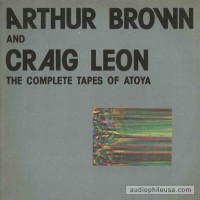
A high-level head-scratcher in the best of ways, The Complete Tapes of Atoya is one of those records that defies reason by it’s very existence. As confounding a pair-up as it reads on paper, it’s still somewhat hard to believe that a record featuring these two forces (yes, Crazy World Of Arthur Brown Arthur Brown) would go un-noted to the extent it has. Although Craig Leon may not signify as a household name, he was a significant figure in the development of the NYC punk and new wave scene of the mid-late ’70’s and beyond, working A&R and producing for Sire Records – bringing the Ramones, Blondie, Richard Hell, and Suicide to the label and working on all of the aforementioned classic debuts.
A Whole Lotta Shakin’ Goin’ On:
A Guide to Rockabilly; Past and Present
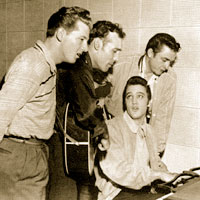
For the uninitiated, the idea of discussing Rockabilly as an independent genre might seem unnecessary. Isn’t the word just a descriptor for early rock and roll, the remarkable if somewhat overplayed work of Rock’s founding fathers, the stuff that gave birth to all that came after? Isn’t it just “oldies”? In one sense, yes, those classic songs we all know, put out by the likes of Jerry Lee Lewis and Carl Perkins, are indeed Rockabilly, and formed the trunk of the rock and roll tree. But oldies? Ah, think again, Grasshopper. Though the sound that was early Rockabilly certainly did morph into all we’ve come to know as Rock, the core sound has remained alive and vital since its inception. Dare I say it? When it comes to Rockabilly, there remains a whole lotta shakin’ going on.
But what is it? What makes something a Rockabilly song? While there is no single definition that is likely to please all, Rockabilly at its essence is a blend of Country and Blues. If Rockabilly is the trunk of the rock and roll tree, it owes its growth to the healthy roots of the earliest American sounds, which until the 1950s could arguably be broken into two categories: white music (incorporating the varied elements of County), and black music (including all aspects of Rhythm and Blues). During the era of segregation, access to music was segregated as well, and the lines between Country and Blues were more distinct. As the U.S. moved into the World War II and post World War II era, several factors combined that came to influence the development of rock and roll: rationing and war recruitment made it difficult to maintain the large touring bands of the Swing era, massive population shifts meant more interaction between different racial groups, post-war affluence and stabilized family structure allowed American teen culture to develop, and the invention of FM radio meant teenagers had access to music they had never heard before. The resulting blend of white and black sounds and culture are responsible for what we know now as the Rockabilly sound.
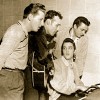 The first wave of music resulting from those historical forces is what most people know as Rockabilly, and one cannot seriously examine that generation without discussing Sun Records. Sun, the brainchild of Sam Phillips, was a Memphis recording studio founded in the early 1950s. Phillips is famous for recording and producing work by Elvis Presley, Carl Perkins, Johnny Cash, and Jerry Lee Lewis among others, and he is credited with creating the original Rock and Roll sound. “Rocket 88”, a song often cited as the first Rock and Roll (and first Rockabilly) song was recorded at Sun, and in some ways represents the racial and musical divisions of the time. Though Sun is most noted for work with white musicians who incorporated a black sound, African-American artist Jackie Brenston first recorded “Rocket 88” at Sun as part of Ike Turner’s Kings of Rhythm band. Interestingly, though Sam Phillips recorded the song, he gave it to Chess, a dominantly black label, for release.
The first wave of music resulting from those historical forces is what most people know as Rockabilly, and one cannot seriously examine that generation without discussing Sun Records. Sun, the brainchild of Sam Phillips, was a Memphis recording studio founded in the early 1950s. Phillips is famous for recording and producing work by Elvis Presley, Carl Perkins, Johnny Cash, and Jerry Lee Lewis among others, and he is credited with creating the original Rock and Roll sound. “Rocket 88”, a song often cited as the first Rock and Roll (and first Rockabilly) song was recorded at Sun, and in some ways represents the racial and musical divisions of the time. Though Sun is most noted for work with white musicians who incorporated a black sound, African-American artist Jackie Brenston first recorded “Rocket 88” at Sun as part of Ike Turner’s Kings of Rhythm band. Interestingly, though Sam Phillips recorded the song, he gave it to Chess, a dominantly black label, for release.
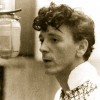 Other notable artists of the time included Gene Vincent, most noted perhaps for his hit “Be-Bop-a-Lula”, Eddie Cochran, whose “20 Flight Rock” was made famous in the film “The Girl Can’t Help It” and whose “Summertime Blues” was a hit for both him and later The Who, and Bill Haley, who also recorded and released a version of “Rocket 88”, and who would later score hits such as “Rock Around the Clock” and a version of “Shake, Rattle, and Roll”. A bit of sleuthing into any of these artists, or others such as Chuck Berry, Billy Lee Riley, Joe Bennett, or Bo Diddley, can lead the interested newbie to scores of others from those early years.
Other notable artists of the time included Gene Vincent, most noted perhaps for his hit “Be-Bop-a-Lula”, Eddie Cochran, whose “20 Flight Rock” was made famous in the film “The Girl Can’t Help It” and whose “Summertime Blues” was a hit for both him and later The Who, and Bill Haley, who also recorded and released a version of “Rocket 88”, and who would later score hits such as “Rock Around the Clock” and a version of “Shake, Rattle, and Roll”. A bit of sleuthing into any of these artists, or others such as Chuck Berry, Billy Lee Riley, Joe Bennett, or Bo Diddley, can lead the interested newbie to scores of others from those early years.
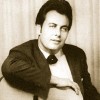 As the new sounds of the 1960s began to dominate the airwaves, Rockabilly faded into the background, or rather was incorporated into the styles of new chart toppers such as The Beatles and The Rolling Stones, both of whom were deeply influenced by early American Rockabilly. Numerous artists continued to play “pure” rockabilly, however, and the 1970s and 80s brought what some would consider the second wave. Artists such as Sleepy LaBeef (pictured), Ronnie Dawson, and Ray Campi led the pack, though none were new to the scene. Sleep LaBeef, for example, had been recording since the 1950s, and joined the Sun roster in 1970. His career exemplified the “big in Japan” element that sometimes characterized rockabilly of the era. LaBeef’s popularity increased in Europe while never cracking the charts in the United States, even as nostalgia for the music began to emerge in mainstream American media with films such as “American Graffiti” and the television show “Happy Days”.
As the new sounds of the 1960s began to dominate the airwaves, Rockabilly faded into the background, or rather was incorporated into the styles of new chart toppers such as The Beatles and The Rolling Stones, both of whom were deeply influenced by early American Rockabilly. Numerous artists continued to play “pure” rockabilly, however, and the 1970s and 80s brought what some would consider the second wave. Artists such as Sleepy LaBeef (pictured), Ronnie Dawson, and Ray Campi led the pack, though none were new to the scene. Sleep LaBeef, for example, had been recording since the 1950s, and joined the Sun roster in 1970. His career exemplified the “big in Japan” element that sometimes characterized rockabilly of the era. LaBeef’s popularity increased in Europe while never cracking the charts in the United States, even as nostalgia for the music began to emerge in mainstream American media with films such as “American Graffiti” and the television show “Happy Days”.
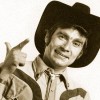 One European who was strongly impressed by Rockabilly was Ronnie Weiser (pictured), who would eventually move to the United States and form Rollin’ Rock Records, a label devoted to the sound. Weiser, a seminal figure in the “rebirth” of Rockabilly, reissued numerous recordings from the early days, and eventually began to release new material, including music from The Blasters, who became part of a larger collection of Rockabilly artists who would thrive in the 1980s.
One European who was strongly impressed by Rockabilly was Ronnie Weiser (pictured), who would eventually move to the United States and form Rollin’ Rock Records, a label devoted to the sound. Weiser, a seminal figure in the “rebirth” of Rockabilly, reissued numerous recordings from the early days, and eventually began to release new material, including music from The Blasters, who became part of a larger collection of Rockabilly artists who would thrive in the 1980s.
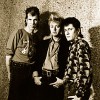 1980s Rockabilly was often marketed as a kind of New Wave music, and it was during this era that Rockabilly began to split into its own set of sub-genres. The Blasters continued to thrive as part of the L.A. Punk scene, and a cover of their song “Marie, Marie” was a U.K. hit for Welsh artist Shakin’ Stevens. The Stray Cats (pictured) had enormous mainstream success with hits such as “Stray Cat Strut” and “Rock This Town”, though interestingly they had to move to England in order to get their first big break. Other bands of note from the time included The Polecats and The Rockats. Sub-genres, born of a blend of Rockabilly and other genres including Punk, Garage, and Surf, would birth new artists such as The Reverend Horton Heat, The Cramps, and Jason and the Scorchers. Numerous disagreements have since ensued regarding which of these and other artists are or are not authentic Rockabilly, who veered too much toward pop, who sold out, and so on. While occasionally divisive, the fact there was and is a large enough body of work to argue about speaks to the strength and permanence of the Rockabilly sound itself.
1980s Rockabilly was often marketed as a kind of New Wave music, and it was during this era that Rockabilly began to split into its own set of sub-genres. The Blasters continued to thrive as part of the L.A. Punk scene, and a cover of their song “Marie, Marie” was a U.K. hit for Welsh artist Shakin’ Stevens. The Stray Cats (pictured) had enormous mainstream success with hits such as “Stray Cat Strut” and “Rock This Town”, though interestingly they had to move to England in order to get their first big break. Other bands of note from the time included The Polecats and The Rockats. Sub-genres, born of a blend of Rockabilly and other genres including Punk, Garage, and Surf, would birth new artists such as The Reverend Horton Heat, The Cramps, and Jason and the Scorchers. Numerous disagreements have since ensued regarding which of these and other artists are or are not authentic Rockabilly, who veered too much toward pop, who sold out, and so on. While occasionally divisive, the fact there was and is a large enough body of work to argue about speaks to the strength and permanence of the Rockabilly sound itself.
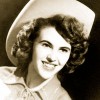 And lest you think Rockabilly is only a boys’ town, rest assured the ladies have been making their mark from the beginning. A woman named Willie Mae “Big Mama” Thornton recorded the original version of “Hound Dog”, after all, later made famous by Elvis Presley. Wanda Jackson (pictured), known as the “female Elvis” has been working her distinct growl and hiccup since the early 1950s. Jack White, a devoted Jackson fan, recently worked with her on the 2011 album, “The Party Ain’t Over”, for which she toured steadily as the opening act for Adele. Other women from the early years include Barbara Pittman and Janis Martin, and there are numerous successful modern artists such as Rosie Flores, Marti Brom, and Kim Lenz. Lisa Pankratz, one of the most respected and in-demand Rockabilly drummers of the present day, is a woman as well.
And lest you think Rockabilly is only a boys’ town, rest assured the ladies have been making their mark from the beginning. A woman named Willie Mae “Big Mama” Thornton recorded the original version of “Hound Dog”, after all, later made famous by Elvis Presley. Wanda Jackson (pictured), known as the “female Elvis” has been working her distinct growl and hiccup since the early 1950s. Jack White, a devoted Jackson fan, recently worked with her on the 2011 album, “The Party Ain’t Over”, for which she toured steadily as the opening act for Adele. Other women from the early years include Barbara Pittman and Janis Martin, and there are numerous successful modern artists such as Rosie Flores, Marti Brom, and Kim Lenz. Lisa Pankratz, one of the most respected and in-demand Rockabilly drummers of the present day, is a woman as well.
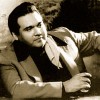 Today, Rockabilly is thriving around the world, and though none of today’s artists are breaking through to crack the auto-tune dominated modern charts, numerous bands record and tour successfully for a wide international audience of devoted fans. Notable artists of the last two decades include High Noon, Big Sandy (pictured), Deke Dickerson, Ray Condo, and literally hundreds – if not thousands – of lesser known acts around the globe, many of which are connected in an intimate and tightly woven network that extends from the former nations of the Soviet Bloc to South America, and new voices steadily continue to enter the ring. Check out JD McPherson and Lanie Lane for a start.
Today, Rockabilly is thriving around the world, and though none of today’s artists are breaking through to crack the auto-tune dominated modern charts, numerous bands record and tour successfully for a wide international audience of devoted fans. Notable artists of the last two decades include High Noon, Big Sandy (pictured), Deke Dickerson, Ray Condo, and literally hundreds – if not thousands – of lesser known acts around the globe, many of which are connected in an intimate and tightly woven network that extends from the former nations of the Soviet Bloc to South America, and new voices steadily continue to enter the ring. Check out JD McPherson and Lanie Lane for a start.
Finally, few musical genres have spawned so defined a lifestyle. Though music remains the heart of the Rockabilly world, the clothing, hair, cars, and conventions are a serious accompaniment for many. Numerous annual conventions, such as Viva Las Vegas in Las Vegas, Nevada and the infamous Hemsby Weekender in England, sell out every year. All told, between the fashion, the records, and the travel, Rockabilly could be said to have its own thriving economy. It even has its own Hall of Fame. Though Rockabilly will no doubt continue to have its share of lean years and occasional break out stars, it is safe to say the sound will continue to make its appearance in both leading and supporting roles for a long time to come. —Tamara Bunnell
Roxy Music “Manifesto” (1979)
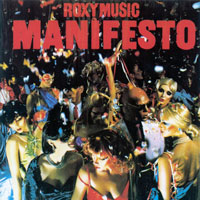
Though they don’t exactly fly out of the used bin like the early records, a strong case can be made that Roxy Music’s “second act” releases are, in their own way, just as singular and compelling as their genre-defining early efforts. Manifesto was the first Roxy Music album to emerge after a four-year hiatus that saw most of the group venture off into solo territory, with mostly satisfying results. Still, a lot had changed in the time they’d been away. Disco’s four-on-the-floor pulse had fully asserted it’s dominance of mainstream pop music, conveniently, right around the time the earliest drum machines were appearing on the market. Never ones to be left in the dust, Roxy managed to embrace the new zeitgeist without sounding cloying or desperate. Manifesto succeeds on it’s own terms, somehow compelling the old, brittling skeleton of their art-rock roots to support new, unfamiliar flesh.
Opening with the disco-ball pulse and crawl of the title track, Ferry and crew come out of the gate (quiet) storming, as if they’d never been away. The deep groove is completely in step with the times, while retaining the subtle menace and mystery that touches all their best work. Ferry sounds both acutely aware of their potentially precarious position as would-be-elder statesmen entering a new era, and characteristically blithe in the utter confidence that he and his band will sail through unscathed to victory. After an extended intro, Ferry finally struts into the mix, ready and willing to silence all naysayers, intoning “I am for a life around the corner/that takes you by surprise/that comes and leaves all you need/and more besides.” Manifesto, indeed. —Jonathan
The Isley Brothers “3 + 3” (1973)
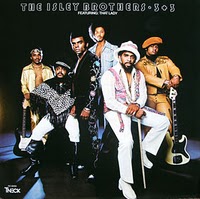 “3 + 3” is a celebratory achievement on a number of levels. The radical shift for many soul acts that were popular in the 60s was to relinquish the sweetly string drenched sounds for a stripped down, harder, rock influenced edge. This 1973 recording is a perfect example of how a band can successfully augment a new style and yet maintain the sumptuous tunes and tight grooves. The full time introduction of younger brothers Ernie (guitar) and Marvin (bass) Isley and cousin Chris Jasper (keyboards) to the fold adds a fresh dynamic and a realisation that the older siblings could count on a level of instrumental originality to compliment their obvious vocal skills. Ernie Isley’s dominating licks bear an uncanny resemblance to the skilled grandeur of Santana, even Hendrix. Chris Jasper’s keyboard embellishments disprove the thought that Stevie Wonder was the only black artist who was experimenting with new sonic textures.
“3 + 3” is a celebratory achievement on a number of levels. The radical shift for many soul acts that were popular in the 60s was to relinquish the sweetly string drenched sounds for a stripped down, harder, rock influenced edge. This 1973 recording is a perfect example of how a band can successfully augment a new style and yet maintain the sumptuous tunes and tight grooves. The full time introduction of younger brothers Ernie (guitar) and Marvin (bass) Isley and cousin Chris Jasper (keyboards) to the fold adds a fresh dynamic and a realisation that the older siblings could count on a level of instrumental originality to compliment their obvious vocal skills. Ernie Isley’s dominating licks bear an uncanny resemblance to the skilled grandeur of Santana, even Hendrix. Chris Jasper’s keyboard embellishments disprove the thought that Stevie Wonder was the only black artist who was experimenting with new sonic textures.
The first revelation is the re-recording of “That Lady”, a song that had been in the Isley Brothers back catalogue for 10 years. The extended jam and Ernie Isley’s ecstatic lead gives the song a remarkable resonance that brilliantly invents new silks from old threads. Their version of Seals And Croft’s tepid “Summer Breeze” adds the beautiful vocal harmonies that came so naturally to the brothers, and for this reviewer is THE definitive interpretation of the song. The heartfelt “Don’t Let Me Be Lonely Tonight” harks to their former glories without a hint of cliché. “If You Were There” is simple joyful pop, and their version of The Doobie Brothers “Listen To The Music” bravely pumps up the funk for a new take on a tried and trusted tune. It’s all here, in triplicate, and without doubt constitutes one of the most entertaining soul albums of the 70s. “3 + 3” is The Isley Brothers watershed moment. –Ben H
Shoes “Silhouette” (1984)
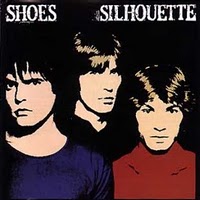 Despite guitars being toned down in favor of keyboards and electronic drums, Shoes’ Silhouette still retains a lot of the qualities of their earlier releases. While the sound is spare and dry to be sure, the consistency of their songwriting remains strong, with lightweight popsters like “Get My Message”, “When Push Comes To Shove”, and “Turnaround” taking prominence, though the robotic charm of “Will You Spin For Me” may be the single most irresistible track. Shoes’ airy, almost artificial sounding vocals actually make for a decent fit to the approach here, so if you don’t mind pure pop with an electronic heartbeat, I’d recommend Silhouette. –Ben
Despite guitars being toned down in favor of keyboards and electronic drums, Shoes’ Silhouette still retains a lot of the qualities of their earlier releases. While the sound is spare and dry to be sure, the consistency of their songwriting remains strong, with lightweight popsters like “Get My Message”, “When Push Comes To Shove”, and “Turnaround” taking prominence, though the robotic charm of “Will You Spin For Me” may be the single most irresistible track. Shoes’ airy, almost artificial sounding vocals actually make for a decent fit to the approach here, so if you don’t mind pure pop with an electronic heartbeat, I’d recommend Silhouette. –Ben
From A Whisper To A Scream: Allen Toussaint, The Meters, and the Funky Sound of New Orleans
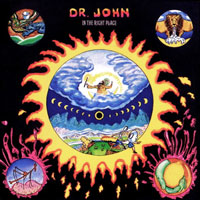
Allen Toussaint is one of those names people know, but don’t know why. One of the enduring figures of the New Orleans music scene, he got his feet wet in the late ’50’s as a session man for the likes of Fats Domino, moving into production and ghostwriting in the ’60’s for soul luminaries like Lee Dorsey and Irma Thomas and penning many of the songs he is (or other people are) known for today. However, it wasn’t until the ’70’s that Toussaint really hit his artistic and creative stride, when he started consistently working with The Meters and releasing records under his own name. Despite penning and producing reams of classic tunes during this period, his name remains one that, while not unknown, isn’t fully understood. The albums below are a handful of our favorite moments, some better known than others, that defined Allen Toussaint and the New Orleans sound in the ’70’s.
 Dr. John In The Right Place (1973) Dr. John’s early “Night Tripper” recordings are classics of n’awlins hoodoo spook, fully evoking the hallucinogenic world of the crazed Creole witchdoctor he built his image on. But after four albums of this kind of dark mojo, the Dr. understandably grew curious as to how the other, day-light-dwelling half lived. Initiating this move with the previous year’s Gumbo, Toussaint and The Meters helped bring it all together on In The Right Place, stirring in an extra dose of traditional New Orleans R&B and funk that helps propel and lift the songs in ways he’d never dared before. While the mood is definitely brighter, some of the signature touches of his early recordings remain, like the moody tribal hand-drumming that pops up on the slower cuts. And then there’s that voice – few things exude the charm and menace of the Deep South like Dr. John’s slurred creole growl – a tool no amount of polish can completely neutralize. This one catches the key players of the scene at the height of their powers, bringing the untouchable sound of The Meters and Toussaint’s stellar horn and songwriting arrangements together with one of the more singular voices of their generation.
Dr. John In The Right Place (1973) Dr. John’s early “Night Tripper” recordings are classics of n’awlins hoodoo spook, fully evoking the hallucinogenic world of the crazed Creole witchdoctor he built his image on. But after four albums of this kind of dark mojo, the Dr. understandably grew curious as to how the other, day-light-dwelling half lived. Initiating this move with the previous year’s Gumbo, Toussaint and The Meters helped bring it all together on In The Right Place, stirring in an extra dose of traditional New Orleans R&B and funk that helps propel and lift the songs in ways he’d never dared before. While the mood is definitely brighter, some of the signature touches of his early recordings remain, like the moody tribal hand-drumming that pops up on the slower cuts. And then there’s that voice – few things exude the charm and menace of the Deep South like Dr. John’s slurred creole growl – a tool no amount of polish can completely neutralize. This one catches the key players of the scene at the height of their powers, bringing the untouchable sound of The Meters and Toussaint’s stellar horn and songwriting arrangements together with one of the more singular voices of their generation.
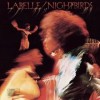 Labelle Nightbirds (1974) Though they’re rarely mentioned with the same esteem held for their predecessors (Aretha Franklin, The Supremes) or their direct descendants, Labelle effectively built the bridge between the two. Their high-energy, funky modernization of the classic soul/R&B girl group sound looked forward to the disco inferno of Donna Summer as much as it did the unhinged ’90’s diva-isms of En Vogue or TLC. Notable for the presence of the Toussaint-penned hit and calling-card, “Lady Marmalade” Nightbirds is probably their best album through and through, thanks to Toussaint’s spacious production and arrangements and the lithe maneuvering of The Meters in the pocket funk support. Patti Labelle’s move into a more mainstream solo career sometimes overshadows just how great Labelle were for awhile, especially Nona Hendryx, who wrote most of the group’s material and was responsible for their increasingly flamboyant attitude and image. Along with P-Funk, Labelle were at the vanguard of Nubian-space-glam, predicting the outre stylings of Kool Keith, Outkast, and any number of modern Hiphop/R&B divas.
Labelle Nightbirds (1974) Though they’re rarely mentioned with the same esteem held for their predecessors (Aretha Franklin, The Supremes) or their direct descendants, Labelle effectively built the bridge between the two. Their high-energy, funky modernization of the classic soul/R&B girl group sound looked forward to the disco inferno of Donna Summer as much as it did the unhinged ’90’s diva-isms of En Vogue or TLC. Notable for the presence of the Toussaint-penned hit and calling-card, “Lady Marmalade” Nightbirds is probably their best album through and through, thanks to Toussaint’s spacious production and arrangements and the lithe maneuvering of The Meters in the pocket funk support. Patti Labelle’s move into a more mainstream solo career sometimes overshadows just how great Labelle were for awhile, especially Nona Hendryx, who wrote most of the group’s material and was responsible for their increasingly flamboyant attitude and image. Along with P-Funk, Labelle were at the vanguard of Nubian-space-glam, predicting the outre stylings of Kool Keith, Outkast, and any number of modern Hiphop/R&B divas.
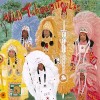 Wild Tchoupitoulas (1976) Tchoupitoulas St. is an ancient New Orleans thouroughfare, named for the Native American Indian tribe who cut it’s original path along the Mississippi as a trade route. The deep history of the name bleeds through this joyful and unique album at every instance, imbuing the proceedings with a real sense of place, and the people who inhabit it. The band was made up of members of The Meters and their extended family – representatives of the nearly-extinct Tchoupitoulas tribe – and produced by Allen Toussaint. In terms of definitive New Orleans records, this ranks with the best work of Dr. John in the way it wholly embodies the spirit of the city, taking the Meters signature groove and riding it through the streets of the Mardi Gras parade without a care in the world. You could be sipping a cup of dirty Mississippi River water and still be in a good mood when the needle drops on this one.
Wild Tchoupitoulas (1976) Tchoupitoulas St. is an ancient New Orleans thouroughfare, named for the Native American Indian tribe who cut it’s original path along the Mississippi as a trade route. The deep history of the name bleeds through this joyful and unique album at every instance, imbuing the proceedings with a real sense of place, and the people who inhabit it. The band was made up of members of The Meters and their extended family – representatives of the nearly-extinct Tchoupitoulas tribe – and produced by Allen Toussaint. In terms of definitive New Orleans records, this ranks with the best work of Dr. John in the way it wholly embodies the spirit of the city, taking the Meters signature groove and riding it through the streets of the Mardi Gras parade without a care in the world. You could be sipping a cup of dirty Mississippi River water and still be in a good mood when the needle drops on this one.
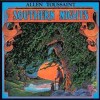 Allen Touissant Southern Nights (1975) Toussaint seemingly gave some of his best stuff away, perhaps having the intuition (and humble nature) to know when a song was just right for someone else. No matter how many times they’re covered in a House Of Blues revue, Lee Dorsey’s versions of “Working In A Coalmine” and “Get Out Of My Life Woman” will always be the definitive ones. However, like any good man-behind-the-scenes, Toussaint managed to hold back some of his best material for himself. All of his solo albums from this period are more than worthwhile, but Southern Nights may be the crowning achievement of his solo oeuvre. The record employs some of the same tools that made his hand in The Meters and Dr. John’s output of the period so evident while side-stepping the confines of the typical soul-funk record, with laid-back, soul-baring deliveries that roll as much as they groove. He filters his vocals through what sounds like a Hammond Leslie on many of the tracks, contributing to the humid, swampy effect of the proceedings, and transporting us into the otherworldly night scene depicted on the cover. Glen Campbell popularized the title track, but Toussaint’s performance of it remains one of the more moving things ever committed to tape, and a convincing, sublime love letter to New Orleans and The South.
Allen Touissant Southern Nights (1975) Toussaint seemingly gave some of his best stuff away, perhaps having the intuition (and humble nature) to know when a song was just right for someone else. No matter how many times they’re covered in a House Of Blues revue, Lee Dorsey’s versions of “Working In A Coalmine” and “Get Out Of My Life Woman” will always be the definitive ones. However, like any good man-behind-the-scenes, Toussaint managed to hold back some of his best material for himself. All of his solo albums from this period are more than worthwhile, but Southern Nights may be the crowning achievement of his solo oeuvre. The record employs some of the same tools that made his hand in The Meters and Dr. John’s output of the period so evident while side-stepping the confines of the typical soul-funk record, with laid-back, soul-baring deliveries that roll as much as they groove. He filters his vocals through what sounds like a Hammond Leslie on many of the tracks, contributing to the humid, swampy effect of the proceedings, and transporting us into the otherworldly night scene depicted on the cover. Glen Campbell popularized the title track, but Toussaint’s performance of it remains one of the more moving things ever committed to tape, and a convincing, sublime love letter to New Orleans and The South.
 The Meters Struttin’ (1970) It would be remiss (and nearly impossible) to write about New Orleans music in the ’70’s without mentioning The Meters own studio albums – though so much ink has already been devoted to this pursuit, we chose not to single one out here. They are the building blocks of all the aforementioned classic albums, and a bunch of other songs you’ve heard and loved without knowing why (it’s The Meters). Struttin’ is a highlight, but it’s hard to go wrong with any of their early ’70’s albums.
The Meters Struttin’ (1970) It would be remiss (and nearly impossible) to write about New Orleans music in the ’70’s without mentioning The Meters own studio albums – though so much ink has already been devoted to this pursuit, we chose not to single one out here. They are the building blocks of all the aforementioned classic albums, and a bunch of other songs you’ve heard and loved without knowing why (it’s The Meters). Struttin’ is a highlight, but it’s hard to go wrong with any of their early ’70’s albums.
Further listening: One of Tousaint and The Meters’ more interesting appearances proved to be Sneakin’ Sally Through The Alley, the debut of one Robert Palmer. Although remembered for his MTV-era hits (and the models in his videos) of the ’80’s, Palmer was a dedicated dilettante…err, soul man, at heart. Although not quite a classic, The Meters, Toussaint, and Lowell George help make Sneakin’ a pretty compelling look for Palmer, making his white R&B moves as close to natural as he’s likely to get. Not for the faint of heart, Toussaint’s involvement in The Mighty Diamonds Ice On Fire remains one of the more curious entries in either of the aforementioned parties’ repertoires and one of the few known specimens of the ill-fated Reggae-Funk sub-genre to this day. File under: much further listening. — Jonathon Treneff
Kid Creole & The Coconuts “Tropical Gangsters/Wise Guy” (1982)
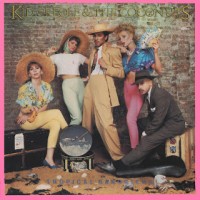
Coming out of the same NYC/Ze Records school that fostered the likes of Tom Tom Club, James Chance, and Was (Not Was), Kid Creole managed to stand out in a scene with no shortage of eccentrics, jokers, and flat-out freaks. One glance at the album covers confirms that no two words could have better summed up the entire ethos of this bizarre ensemble better than Tropical Gangsters, the UK title of the Coconuts third album. Kid Creole was an ex-English teacher who put his Masters degree into the service of a theatrical, but light-hearted take on the post-disco-funk explosion that was setting NYC clubs on fire in the early-’80’s. Creole’s former career bled through into the highly conceptual narratives that pre-occuppied his songs and albums, and Tropical Gangsters is no exception. The loose theme of the album revolves around the group being shipwrecked on an island of outcasts and their “gruesome ordeal”, as they are forced to play “RACE MUSIC” to broker their escape. Being of Latin descent, the Kid and his half-brother and bandmate never demurred from their background, often winkingly embracing it in the music and image of the band. Their sense of humor naturally extended into the songs themselves – “Annie, I’m Not Your Daddy” employs the female Coconuts in a dialogue wherein our hero must settle a question of paternity the only way a tropical gangster knows how – with brutal frankness – “See if I was in your blood/Then you wouldn’t be so ugly”. Tropical Gangsters takes the coconut and runs with it from here, with seven more hilarious tales of island-life scandal and intrigue that duly threaten to grind the dance floor to dust while they’re at it. KC had made good albums before this, but this was where the songs and the groove finally came together to create the perfect tropical storm. —Jonathan
John Foxx “Metamatic” (1980)
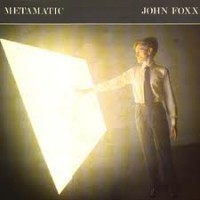
With every listen, Metamatic takes me into this whole other world, a deserted Metropolis where daylight never comes and the only sound you hear is the menacing “click-click drone” of human-hunting cyborgs. John’s eerie man-machine vocal,combined with bizarre, doomy lyrics provoke an entertaining kind of dread in me, then there’s the music… while the clanking beats and deathly-cold synthesizers show their age, the way they fit with the vocals and lyrics, astounds my senses to the point where its hard for me to hear these tunes as just the work of a creative young man, its more like each song has a life of its own, beyond the confines of its creators imaginings. A difficult sensation to explain, but a very powerful one that places Metamatic among my most played and highly regarded records.
“No One Driving”,“030”, “A New Kind of Man” and the completely surreal “Tidal Wave” (Should I laugh or be very scared?) are a vital part of an extremely weird set of songs that would provide the ideal soundtrack to a mind-bending Sci-Fi/Horror fest. —Misfit
Ace Frehley “Ace Frehley” (1978)
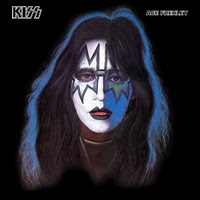 Ace was always the coolest member of KISS, his couldn’t care less attitude contrasting with poutin’ Paul and the demon, and his meat and potatoes guitar style featuring a wide, spaced out vibrato, was central to the KISS sound. It’s no shock that of the four ’78 solo albums, Ace’s is always the favorite, and I’d go as far to say it stacks up against any of the original KISS studio sides. The key is Ace’s lack of ambition, Ace Frehley being a straight-ahead hard rock record with few deviations. “Rip It Out” drops the hammer as the deliriously wasted “Ozone,” scatterbrained “Wiped-Out” and snortin’ slammer “Snowblind” draw you into Ace’s chemically-addled world. Ace manages to mix things up as well, his cover of the Russ Ballard penned glam-stomp “New York Groove” turning into a hit, “What’s on Your Mind?” being a hidden power pop gem, and the album closes with the cool chill-out instrumental, “Fractured Mirror.” –Ben
Ace was always the coolest member of KISS, his couldn’t care less attitude contrasting with poutin’ Paul and the demon, and his meat and potatoes guitar style featuring a wide, spaced out vibrato, was central to the KISS sound. It’s no shock that of the four ’78 solo albums, Ace’s is always the favorite, and I’d go as far to say it stacks up against any of the original KISS studio sides. The key is Ace’s lack of ambition, Ace Frehley being a straight-ahead hard rock record with few deviations. “Rip It Out” drops the hammer as the deliriously wasted “Ozone,” scatterbrained “Wiped-Out” and snortin’ slammer “Snowblind” draw you into Ace’s chemically-addled world. Ace manages to mix things up as well, his cover of the Russ Ballard penned glam-stomp “New York Groove” turning into a hit, “What’s on Your Mind?” being a hidden power pop gem, and the album closes with the cool chill-out instrumental, “Fractured Mirror.” –Ben
Genesis “A Trick of the Tail” (1976)
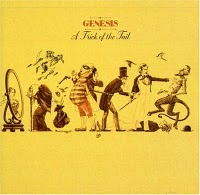 If Genesis is, at best, a guilty pleasure (and I’m not necessarily implying they are), what to make of post-Peter-Gabriel-Genesis? And if they’re not a guilty pleasure (and I’m not fully prepared to say they aren’t), but rather, with Gabriel at the helm, the Most Wonderfulest Group on God’s Grey Earth—what happens to the listener who says A Trick of the Tail is probably nearly almost just about as good as Selling England by the Pound? Shall he be drawn and quartered?
If Genesis is, at best, a guilty pleasure (and I’m not necessarily implying they are), what to make of post-Peter-Gabriel-Genesis? And if they’re not a guilty pleasure (and I’m not fully prepared to say they aren’t), but rather, with Gabriel at the helm, the Most Wonderfulest Group on God’s Grey Earth—what happens to the listener who says A Trick of the Tail is probably nearly almost just about as good as Selling England by the Pound? Shall he be drawn and quartered?
With more emphasis on rhythm, due to less cluttered production and willful eccentricity, the group seems to hit their stride as a (relatively) straightforward rock outfit following the departure of resident eccentric Peter Gabriel. The emergence of Phil’s drums are just the refreshing advance that was needed after all that murky “orchestration;” but the orchestration on this album’s predecessor leaves a lot to be desired on this weird crossover, an album that mines territory similar to Lamb’s predecessor, Selling England by the Pound, but lacks the structural inventiveness and the skewed cinematic sense the group had captured on the latter and the aforementioned follow-up, an unwieldy but frequently incredible record.
For those who entirely discount post-Gabriel Genesis, much of this (and its successor, for that matter) are pretty solid. Arguably not up to the standard of anything that came before, but, trading in some of the “drama” for a stronger attack and a little much-needed directness, this stuff is pretty, and mostly pretty compelling. Phil Collins haters be damned! –Will
Curtis Mayfield “Curtis/Live” (1971)

For better or worse, Curtis Mayfield is destined to forever be identified with Superfly. Never having been much of blaxploitation film buff, or funk disciple, I’d more or less shelved him under “important, but not for me”. Then one day – one misbegotten, hungover Sunday of yore, a friend unassumingly dropped the needle on Curtis/Live and blew what was left of my delicate mind. In the moment, the sounds emanating forth felt like a godsend – the only thing that could have possibly soothed my shattered and disheveled mind. This was music beamed down from the cosmos, painstakingly prepared by benevolent hands. This may sound like a lot of hyperbole, but I’ve kept myself honest, revisiting the record months and years after the point of impact, and the results remain the same: this record is a stone-cold masterpiece.
Curtis/Live gets across everything a live album should, but rarely does. For starters, Curtis had the savvy to assemble a batch of musicians who knew how to set up a vibe and dig their heels into it. The band is supernaturally in tune with each other, letting the songs expand and contract with an unhurried precision that intuitively follows Curtis’ restrained, yet highly emotional delivery. Many of his best known songs make appearances here; “I Plan to Stay A Believer,” “If There’s A Hell Below (We’re All Gonna Go), and “Superfly” all get makeovers, and are the better for it. Stripped of the flowery arrangements and porno-funkisms that could de-tooth his studio recordings, these songs are allowed to breathe and inhabit the loose-limbed bodies they deserve. The meditative readings almost border on the devotional, conjuring the same spirits as Sun Ra’s Arkestra at it’s peak, or the hazy and haunted spirituals of Rastafarian nyabinghi music. Thankfully, the recording quality matches the performances, with a room sound so stunningly balanced and alive you can almost hear a guitar pick drop onstage. The definitive Curtis effort, and a must-hear for anyone interested in music, or feeling, period. — Jonathan Treneff


